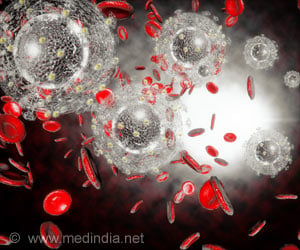- Research team have identified a method of treating a cancer patient by silencing genes that code for a protein called PD-1 using the CRISPR-Cas9 system.
- The trial was conducted to identify safety and has been successful thus far. The trial will extend to 10 patients who will be reviewed after 6 months to understand the effects.
- A similar trial was proposed by a group of researchers from the U.S in June, creating a race between China and the U.S for CRISPR-Cas9 system use in human trials.
This is a gene editing tool that lets researchers edit genes. It was first discovered by U.S scientist Jeniffer Doudna which led her to win the breakthrough award for 2015.
This editing tool has risen in importance and scientists from China and the U.S have been trying hard to get it into mainstream medicine, where the tools can be used to help develop a cure for genetic diseases.
Chinese Researchers Lead First Ever Human Trial
Sichuan University’s Lu You isolated the immune cells from the blood of a lung cancer patient. Immune cells express a protein called PD-1 that is a turn off switch to protect the other cells in the body. The CRISPR Cas 9 editing tool was used to disable this protein so that immune cells can mediate an attack on the cancerous cells.
Study By U.S Scientists
This has raged a biomedical battle between China and U.S in discovering mechanisms by which the CRISPR-Cas9 system can be safely used to treat cancer and other life-threatening conditions in humans.
Though this method of treating cancers is expected to bring in laurels for the research group that helps devise a meaningful and safe method, Chinese researchers have put their foot forward first. The regulatory authorities in the U.S have more stringent rules and the first step in the U.S trial is aimed at safety rather than providing answers about its efficacy.
Advantages of the CRISPR-Cas9 System
- Unlike other editing methods, CRISPR-Cas9 system relies on enzymes that are aimed at removing the target genes.
- In the current model studied by the Chinese researchers, genetically edited cells were injected into humans and the disease brought under control. Though this study focused on treatment for cancers that are difficult to treat, it may soon be used for all types of cancers.
- The system can be used to change the root cause of the disease i.e the genetic mutation that resulted in the disease.
- The gene editing could take place in regions that are not the target regions, resulting in new mutations that could lead to cancer.
- A previous study on human embryos
showed that out of 86 embryos tested
- Two-third had genetic mutation
- 26 embryos only had the desired mutation
- CRISPR-Cas9 System will be used by Editas Technology to treat gene-related blindness in humans.
- University of Stanford researchers plan to use the CRISPR-Cas9 system to treat genetic mutations that lead to sickle cell anemia.
Reference:
- First human treated with CRISPR gene-edited cells in China, report says - (http://www.pbs.org/newshour/rundown/first-human-treated-crispr-gene-edited-cells/)















